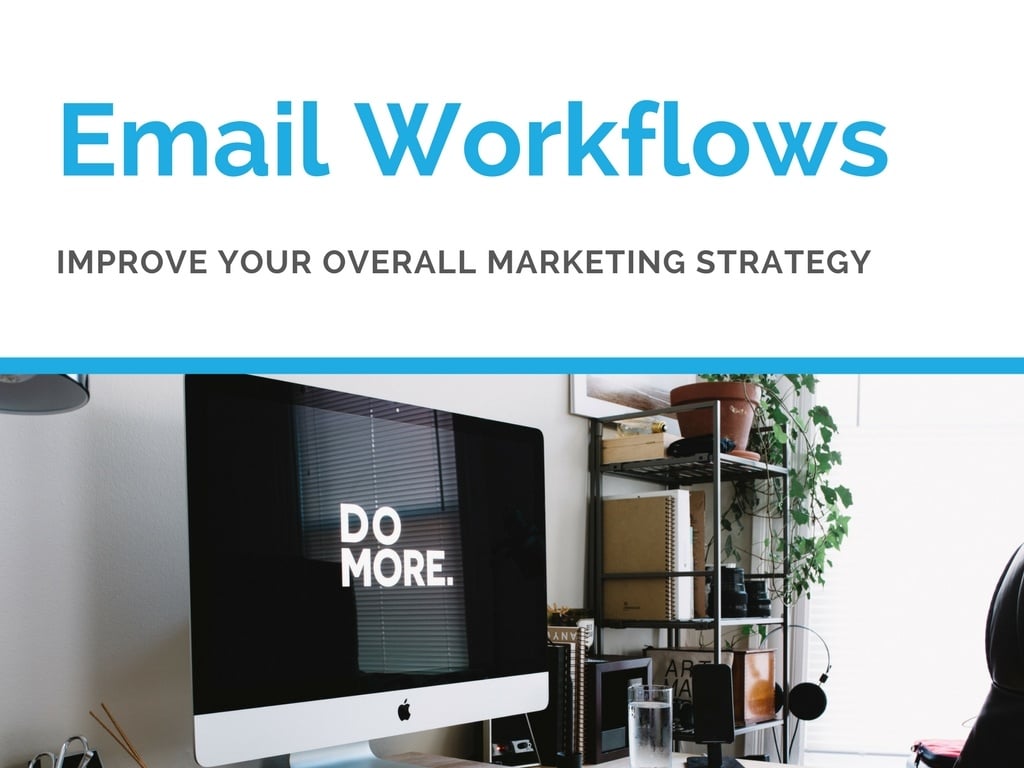- Feb 1, 2017
- By Jeff Fosco
- In Social Media and Digital Marketing, Marketing Strategy and Planning
Tips to Leverage Email Workflows to Improve Your Marketing Strategy

![]() Maybe you’ve heard email marketing is dead. Despite what some say, this couldn't be farther from the truth. 59 percent of B2B marketers cite email as the most effective channel for generating revenue. While 73 percent of B2B marketers say email is essential to growing their business. What is dead are old-school email tactics — and that's a good thing. Savvy marketers know that email marketing today is a combination of refining and layering your audience segmentation, providing value in the form of what your audience wants or needs in a particular moment and personalize the email message.
Maybe you’ve heard email marketing is dead. Despite what some say, this couldn't be farther from the truth. 59 percent of B2B marketers cite email as the most effective channel for generating revenue. While 73 percent of B2B marketers say email is essential to growing their business. What is dead are old-school email tactics — and that's a good thing. Savvy marketers know that email marketing today is a combination of refining and layering your audience segmentation, providing value in the form of what your audience wants or needs in a particular moment and personalize the email message.
If you're ready to revamp your email marketing strategy, these tips will help you set up workflows to improve your overall marketing strategy.
What Is a Workflow?
Let’s start with the basics. Workflows are automated, or triggered, emails based on audience data and/or behavior. For example, when a person subscribes to your blog or downloads an ebook, a predetermined email is automatically sent to that person to spur further action. The action could be to visit another blog for more information. Or the action could be to download a case study they may find helpful. Workflows can also accommodate for negative activity, or trigger messages to people who have not taken any action in a certain number of days.
Workflows are an essential part of a modern email marketing strategy because they help marketers accomplish common goals such as onboarding new customers or nurturing new leads. They also provide the right levels of relevance and personalization so the recipient know that you understand their pain points and needs. Your emails to them are part of an on-going conversation. And no one likes being part of a conversation when one person does nothing but talk about themselves and how awesome they are.
To start that conversation, let’s take a look at how to segment your audience to create an automated email workflow that works.
Download our Marketing Effectiveness Checklist to help improve and enhance your overall marketing efforts.
1. Segment Your Audience
There are many ways to segment an audience, and each person can reside on several segments at once. When you're deciding how to categorize your audience, start by listing the specific goals of your email marketing strategy. For example, you may want to welcome new customers, nurture leads based on current engagement, re-engage past customers, send out regular onboarding tips or invite specific groups to events. Hubspot reports that segmented and targeted emails generate 58% of all business revenue.
Here are just a few ways you can divide your list based on your needs:
- Location. Personalize your messages based on location is a great first step in audience segmentation. In addition to sending emails at the right time for varying time zones, location personalization allows you to focus on the locations you do your primary business in.
- Job Function and Level. Sometimes you want to send messages directly to decision-makers. Other times, you want to reach those who influence the decision-makers. Knowing the function of the individual you are contacting will help you make the best impact. Look to your buyer personas to help you segment based on job responsibilities and functions.
- Life-cycle stage. It's always a good idea to segment based on where an individual is in the sales funnel. New leads, who’ve only read one blog, will probably not be as receptive to case studies or emails to schedule a demo or in-person meeting as an MQL who has subscribed and opens your weekly blog emails, visited the About Us page and downloaded your last 2 advanced offers.
When you know what your goals are, you can shift your focus onto the needs of the reader. Move past what you want to say and start thinking in terms of what your readers would want to hear and see. And this is where you begin to create an email of value for the individual.
2. Provide Value
The purpose of all this segmentation is to provide value to your readers. Value isn’t always in the form of discounts or save-now offers. It could be recommendations, support, rewards, reminders or recognition. When working on the content of your automated email marketing strategy, it is essential to keep your focus on the needs of the readers so you're sure to give them something they want — not necessarily what you think needs to be said in the moment.
Take a virtual walk down the purchase path you've set down for your customers. What are the potential stopping points and roadblocks? Where do the common exits seem to be? What are people doing after they've made a purchase? Think about ways to automate a reach-out at all these places and what type of content they would prefer at that stage.
Sometimes, you can provide value to someone in the earliest stages of the buying process by offering long-form content such as ebooks and whitepapers. These are especially useful for products and services that take an extended amount of consideration time or for things that might require a complex implementation. By providing answers to questions, you can begin to remove the barriers to a sale without the need for a hard push.
In some cases, providing recommendations to useful tips, tools and companion products may be just what the person is looking for. Don't forget all the ways to engage the segments of your audience that might prefer a little offline contact. Try offering a face-to-face consultation, a phone appointment or an invitation to an upcoming event. For these segments, an automated email workflow can be the tool that facilitates your in-person gatherings.
3. Make It Personal
Segmenting your audience and providing value in your emails all comes down the key of modern email marketing success: personalization. Using automated workflows may seem like a fast-track to impersonal marketing messages, but when done well workflows can save you time and still reach your audience with a personal and thoughtful marketing message.
We have the tools and the technology to add personalization to the most automated workflows. Most recipients are aware that your personalization is yet another automated feature (we all know it's rare to receive an individually typed email from a business unless it is a direct response to an inquiry or order), but as long as your efforts are relevant to the reader, they will be well-received.
Start with the basics by using smart fields to add personal elements based on known information. Even if it's something simple like the reader's first name or highlighting the user's last action, these added touches will help people move away from the feeling that they've just received a bulk message. Use location and time data from your customers to personalize the day and time that emails are sent to optimize the experience for them. This is especially impactful for an international roster of clients.
Add segmentation and value based on your audience segmentation and the audience needs at a specific moment, craft an email workflow that provides value in that moment. Use if/then logic to develop distinct marketing paths for your audience. Each email after the if/then branch will be based on their previous action, creating a more personal conversation with them.
For example: If they open email one to download a free eBook, they will get email 2 to check out a case study. If they do not open email one to download a free eBook, you may wait 5 days and send them an email offering a different eBook that may be more useful to them. And so on and so on. If/then logic branches can be as simple or complex as you need them to be. But it is always part of the email personalization process.
Finish strong by including a custom signature from a real person in your organization — especially if you include a photo and actual contact information — to round out the personalization in your email. Knowing that
An Email Marketing Strategy that Works
The key to automating your email marketing strategy is to focus on the needs of your current and potential customers. By spending the time upfront to break down the path to purchase into distinct steps and dividing your contact list into groups that belong together, you can transform email automation from an impersonal megaphone message into a powerful conversation tool that works hard to keep your customers coming back for more.





